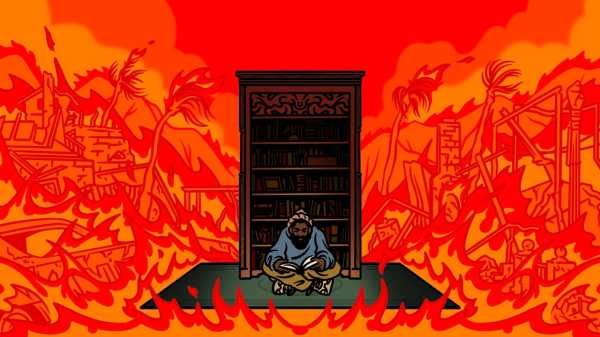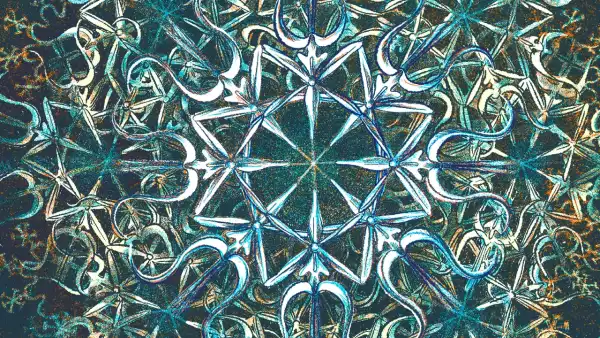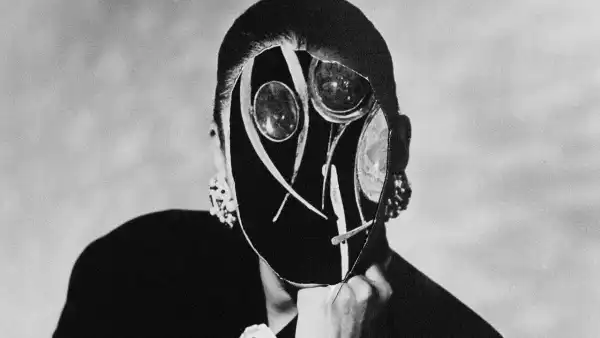
Save this storySave this storySave this storySave this story
I’d like to think that Nikki Giovanni would have forgiven me for misleading the seemingly oblivious white proprietor of a small bookshop in the Northeast two years ago. There were no books by Black women in the store’s poetry section except for one volume, which was so slim that you might have missed it if you weren’t paying the kind of close attention that comes when you’re in disbelief about the monochromatic nature of a selection of books. The book, Giovanni’s “Black Judgement,” was, in its original form, more of a chapbook than anything, the pages stapled together, the bound volume lacking a spine with language on it that might signal to seekers that they have uncovered it. And this is one miracle of paying close attention, even if that close attention is brought on by bewilderment—the miracle of, very literally, not knowing what you are looking for until you find it. A pamphlet of poems published in 1968, “Black Judgement” is among the earliest and most revolutionary works by Giovanni, who died in December, at the age of eighty-one. The first edition, dark brown with illustrations of black men on the cover, is rare. In an interview once, Giovanni said that she wrote it for her mother, because she thought that it might be the only book she’d ever write. This sentiment was something I understood. I admire writers who believe they will write an infinite number of books, but I don’t relate to them.
The price on the back of “Black Judgement” in that small bookstore was twenty-five dollars, which is how I knew that the shop owner either didn’t know what he had or didn’t care. After a brief moment of consideration—during which I imagined myself running to the counter, pushing my phone toward the owner’s face, and scrolling through all the information about how rare the book was, how cherished it was, and so on—I decided, instead, to make his ignorance none of my business. Besides, as Giovanni once wrote, “We must move on to the true issues of our time,” which for me, in that moment, was rescuing this book from this place and getting it home before anyone asked questions. It felt like getting away with something, and this sometimes is all survival ends up being anyway.
The day before the fires in Los Angeles began, I sat up in bed and watched one minute of some cobbled-together A.I. video that a musician had posted on Instagram. It was the longest I’d ever spent watching an A.I.-generated video, up until that point, and I lingered mostly out of a newfound sense of despair and frustration. The video itself wasn’t unique; it was a motion-driven version of A.I. photos I’d seen splattered across the Internet for months. A series of dead musicians, brought back to life, wander the museum-like interior of some building, staring at photos of their old album art, until the album art itself soullessly comes to life. The A.I. version of the Notorious B.I.G., confronted with the A.I. version of his baby self on the “Ready to Die” album cover, both of them now alive, looking into each other’s eyes. I didn’t finish the video, and I didn’t entirely understand what people were claiming to get out of it. Despite its conceit of resurrection, the footage felt entirely lifeless, like a series of half-done tasks on a list. A number of the comments derided the video, but some people described it as “moving,” or as tapping into some “nostalgic feels.”
My sense of despair emerges not just from the technology itself or from the climate impacts of A.I. but from how easily impressed people seem to be. (Look, another photo of a dead musician shaking hands with a dead Black political leader from an entirely different generation!) Despair, too, because of how accessible escape is becoming in a world that requires more rigorous close looking, every day. And, of course, escapism is a supply-and-demand business. As the world requires more of the people in it, it also offers more opportunities to turn away. I also feel despair over the ways society treats the dead. I do not desire a computer-generated image of a deceased musician I listened to or loved. I do not desire any technology that might bring my late mother back to life, allow me to hear her voice or her laugh again. I believe that what makes the dead worthy of our grieving (by which I mean our memories, our returns, our affections) is that they cannot come back.
In 2023, after Giovanni performed at the Brooklyn Academy of Music, in a series I curated, somewhat selfishly, to my own tastes and desires, we took a few photos together. In the photo I love most, Giovanni is signing my copy of “Black Judgement,” which I’d nervously brought with me from Columbus to New York earlier that morning. She’s immersed in the process of signing her name. Moments before, she’d been tenderly holding the book, turning it over in her hands, mumbling gently about how it had been so long since she’d held one of those early copies.
In response to this, I’d told her that she could have the book—it was hers, after all, in the sense that she’d dragged it into the world. She laughed, and told me that she was too old to be collecting things from her past. I didn’t think, until later, about the difference between her past and the past. I accumulate things from everyone’s past but my own—old magazines, old vinyl, old concert T-shirts and jackets, old books from beloved poets who only had the resources to print a handful of copies, one of which ended up languishing in a bookstore, mostly out of sight. I have no pictures in my home of myself as a child, no photos of my mother or my father. There is no box with old elementary-school art or high-school English papers. No shelf for my past sports achievements. I’ve lived those things, I have always thought; I don’t really need too much of them back. Besides, if my actual past remains at my fingertips, how can I mold the memories of it into something more romantic than it actually was?
In the photo with Giovanni, my hand is on my heart, watching her sign her name in her old book. I am smiling in a way that, to me, looks sort of relieved. Relief, perhaps, that we’d both made it to this point; we’d found each other while we were both still living. Looking back now, I would like to think that it would be foolish for me to have been thinking about death during that exchange with Giovanni, which seemed at the time, and remains, one of the most cherished interactions of my life. Instead, I will say that I was thinking about time—how it peels away from us in fractions that don’t always feel like fractions. The slowness of time’s passage, for me, has often depended on what story I can extract from the time spent. What can be told to someone else, which might then be told to someone else. If you are lucky, sometimes minutes feel like entire generations fit within them.
A day into flames ravaging California, posts about Octavia E. Butler’s 1993 novel, “Parable of the Sower,” began to circulate on social media. People expressed awe at the coincidences between the book’s narrative and current events, and I cannot blame them. On the surface, the parallels are awe-inspiring, as surface coincidences can be. The book begins in 2024, in the midst of ecological collapse in California. Butler herself was born in Pasadena and lived in Black communities there and in Altadena, two places that were especially affected by the recent fires. These biographical facts were summoned as evidence that Butler, in her wisdom, had predicted a future that was now arriving, close enough to touch, close enough to fear.
In “Parable of the Sower,” Lauren is a fifteen-year-old Black girl who lives in Los Angeles, in a cul-de-sac that is blocked off by walls, which creates a safe haven in a world of desperation and depravity brought on by, among other things, climate disaster. Drought is prevalent, food is scarce, and, yes, there are fires. Lauren is afflicted with hyperempathy, which means she feels the pains and joys of others intensely, as if she were experiencing them herself. When the neighborhood she lives in is attacked, Lauren escapes, and she and two other survivors from the neighborhood begin a journey north. Lauren dreams of visiting new planets to spread her belief system, a religion called Earthseed, which holds that “God is change,” and that, though one cannot resist God, He is subject to human influence.
The most salient lesson from “Sower,” for me—and one that runs throughout Butler’s work—is about the innovation and adaptation required to survive the unsurvivable. When we are introduced to Lauren’s neighborhood, at the start of the book, it is an insular community, doing its best to take care of its members during a time of scarcity. Residents devote themselves to tasks, be it preaching or gardening or cooking or teaching self-defense. After Lauren sets off on her journey, her band of people grows, and they protect one another in a world that has already collapsed in almost every meaningful way. There’s a famous Butler quote that surfaces often: “There’s no single answer that will solve all of our future problems. There’s no magic bullet. Instead there are thousands of answers, at least. You can be one of them if you choose to be.”
This quote on its own does the trick of inspiration, I suppose, or at least has the benefit of looking nice laid out on an Instagram grid. But the exchange from which it’s drawn presents a more vivid analysis of how the past and present seem to be on an infinite loop. After Butler delivers a talk, a student asks her if she believes that in the future there will be the kind of troubles she wrote about in “Parable of the Sower.” Butler replies that she didn’t invent the problems; she just observed the problems that already existed and saw that they were being neglected. The student then asks her for a solution, and Butler says that there isn’t one. “You mean we’re just doomed?” the student asks.
When Butler retells the story, she mentions that the student said this while smiling, as if he believed it to be a joke.
It was late on the second day of the fires when I noticed a photo of the Hollywood sign in flames. I’d been texting back and forth with a handful of my friends, gathering information from other friends about who in L.A. was taking their children where, whom we could get into a car, or maybe onto a plane. There seemed to be at least one new fire breaking out, perhaps more than one, and “look! now the goddamn HOLLYWOOD sign is on fire!” a friend texted, dropping a photo into the text thread almost simultaneously.
The photo wasn’t real, and it didn’t stand up to much scrutiny. Once my pals and I got over our initial shock, we could see plainly that the picture was A.I.-generated. It was the kind of image manufactured to generate a very specific type of interaction online—the type of photo that someone could post with a caption like “No further comment needed.” The photo is the language, the entire story, providing a kind of narrative convenience. Even when people became aware that the image was fake, many clung to its easy meaning: it’s a metaphor.
I was annoyed by this for all of the predictable reasons. A photo that was supposedly potent enough to tell an entire story turned out not to be real, yet people were so eager for a narrative that they would seek one out anywhere, even from a source that was empty, a source that they knew was empty. What did that say both about the story and about the people? A place was actually on fire. Evidence of the destruction was flooding our screens. There was no need for metaphors, which seemed to me like a refusal to confront the reality of the burning world: look, this site isn’t in fact on fire, but it could be, and isn’t that something? The world is bad, but it could, I guess, be worse—but the good news is that it isn’t worse! At least not this kind of worse! But just imagine if it was!
I admit that I felt ashamed, too, for how this ordeal provided me, for a moment, with a kind of rageful distraction from the fact that a city was burning, a city where there are people I love, and people I don’t know at all but who still might need something that the rest of us have to offer. I was scrolling the comment section underneath a doctored photo, which meant that I was ignoring urgent logistical questions from friends in L.A. who were plotting a trip to come stay with me in Ohio for a while. This, too, is one function of invention: giving people something that pulls them away from what is real, aching for their attention, their action, their care.
That line “We must move on to the issues of our time” is in a Giovanni poem called “A Historical Footnote to Consider Only When All Else Fails,” which is included in “Black Judgement.” It is a tongue-in-cheek poem, peppered with the kind of linguistic playfulness and sarcasm that Giovanni managed to lace through her work for much of her career without diluting her revolutionary politics. Like Butler, or June Jordan, or Gloria Naylor—like a whole host of Black women writers I grew up with—Giovanni was an observational writer, though each of these writers gave her own observations a unique structure. Butler, for example, leaned into the directness of warning. Jordan was a master of direct address, asking loaded questions of her audience, as in “Poem About Police Violence,” which begins with the words “Tell me something / what you think would happen if / everytime they kill a black boy / then we kill a cop.”
After “Black Judgement,” Giovanni went on to publish work that became more popular, and work that some would consider more polished, but the collection stands out to me for how its poems feel youthful, unburdened, the outpourings of a revolutionary who is serious but not taking herself too seriously. I love the line about how we must move on to the true issues of our time, but, much like the Butler quote about how there is no one single answer to our future problems, it does not land as potently without the lines that came after. The poem is a warning to the reader not to fall victim to the manufactured foolishness of the times. (“Rhythm and Blues is not / The downfall of a great civilization,” Giovanni writes.) After all, there is real work to be done:
We must move on to
the true issues of
Our time
like the mini-skirt
Rebellion
And perhaps take a
Closer look at
Flour power
It is for Us
to lead our people
out of the
Wein-Bars
into the streets
into the streets
In October of 1993, shortly after “Parable of the Sower” was released, the Kinneloa wildfire tore through Southern California. It destroyed nearly two hundred buildings in Altadena and the nearby community of Kinneloa Mesa. By the time the fire began, California was at the end of a years-long drought; the winter of early 1993 was exceptionally wet, and this led to a spring of new growth, which by October had yielded an abundance of dry grass and brush. The Kinneoloa Fire wasn’t the only one that burned through Southern California that month; the Laguna Fire ignited on the same day and burned more than sixteen thousand acres, destroying hundreds of homes. But the Kinneloa Fire is the one that hit closest to the real-life community that Butler was reimagining in “Parable of the Sower,” which was released just weeks before the actual fires began. In “Sower,” fire represents both finality and a kind of freedom. Its aftermath affords an opportunity to imagine a renewed world, with renewed requirements for survival.
People are not incorrect about Octavia Butler predicting the future, but they’re not always clear about what kind of future she was envisioning. It’s not the fires or drug use or tumbling literacy rates that she invented—all of those problems were simply there for her to see. What “Sower” imagines, rather, is a future in which surviving the seemingly unsurvivable requires people to show some emotional dexterity, some ability to surrender whatever selfishness they’ve been harboring and see if they have something that someone else needs. This is the starting point of mutual aid: What do I have that someone else may need? Butler’s work is outlining a future where posing that question is a requirement. “Sower” isn’t just about a time and a fire and a place; it’s about people deciding what kind of apocalypse they are going to have, and then deciding how to live in its aftermath.
It may help, too, to be honest about what is already here. “Sower” is about a future on fire, but the author’s present was on fire, too. We can’t always be looking toward the future. The climate disaster isn’t coming. It has been upon us for years—at this point, most of the years that I’ve been alive. The crises are here, and they are speeding along, and they are not particularly interested in whether you, or I, or any of us are clocking their presence. The crises have no ego, no desire for acknowledgment. The world will collapse with or without the agreement of the people inhabiting it. Indeed, the world as we know it has ended several times over, in ways small and large, whether we want to acknowledge it or not. Yes, we are doomed—doomed to adapt, to define our comforts and part with them when we must. Like Butler’s characters, we get to determine what kind of apocalypse we’d like to have, and you can’t drag everyone to a better place. Not everyone can get there.
The cemetery in Altadena where Butler is buried caught fire, though her actual grave remains. My copy of “Black Judgement” lost its flimsy staples and fell to pieces while I was travelling with it; I lost a page in the airport. These are, of course, unequal tragedies, if the latter can even be called a tragedy. But last year, as I bounced around the country promoting a book I’d written about mortality and the passage of time, I was asked to answer a lot of questions about legacy, both my own and that of others. I would always answer that I wasn’t particularly interested in legacy, that I’d be skeptical of myself if I spent too much of my time aboveground concerned about my legacy when I’m below it.
But I think I would like to revise this response. I was asked in one interview if I was worried about being forgotten. I don’t remember the answer I actually gave, but the answer I wish I’d given is that my greater fear is having my memory misappropriated—being gone and having what I’ve said or done be reanimated, reduced to some bite-size interaction bait. Or, worse, being digitally brought back to life in service of some brief, feel-good nonsense.
There is so much that cannot be brought back, that I mourn because I cannot hold it anymore. When one friend of mine called to tell me her house had burned down, and that she’d only been able to take a few things, she instinctively ran through a list of all that she wouldn’t see again: her grandmother’s wedding ring, which she didn’t think to put on her finger before leaving; tapes of her dead mother singing; her husband’s signed basketball cards from childhood. I didn’t stop her as she was ticking off the items, because I understood that it was more for her than me. I understand this element of loss, the exercise of cataloguing all that cannot come back, at least not in its original form.
I grieve for many things; the engine of my grief changes, sometimes hourly. I grieve for our increasingly hostile and uninhabitable world, and I grieve for the cruelties that make it so, both structural ones and ones that individuals inflict on one another. But today I am grieving because I struggle to fathom all of the material loss of meaningful things—the kinds of things that I know I’ve just tossed on a table, like some of my mother’s old writings from the nineteen-seventies which I’d left sitting out until the other day, despite friends coming over and nervously saying, “Shouldn’t you, I don’t know, put these somewhere?”
Yes, a lost house itself is a tragedy, but there is an entire universe in the items inside, an entire universe in the single page of a book that drifts away while you’re running to catch a flight. There is an entire universe in a quote, an entire universe in interpretations of a book that begs for humanity to find a way to survive when our environment cannot sustain us anymore. In lieu of words, do not send invented photos or videos that supposedly say something profound. I would prefer silence. I would prefer a room where I can sit with someone who holds in their hands something they saved from the end of the world this time, something that reminds them of someone else.
Last year, I was gifted a framed version of the photo of Giovanni with me looking over her shoulder, my hand on my heart. I don’t put up pictures of myself in my home, I thought at the time. I don’t need to live in my own past; the pasts of others is plenty. But then Giovanni died, so I found a shelf for the picture. Nothing is permanent here, or anywhere, but today the picture has its place, and I hope I can say the same tomorrow. ♦
Sourse: newyorker.com







